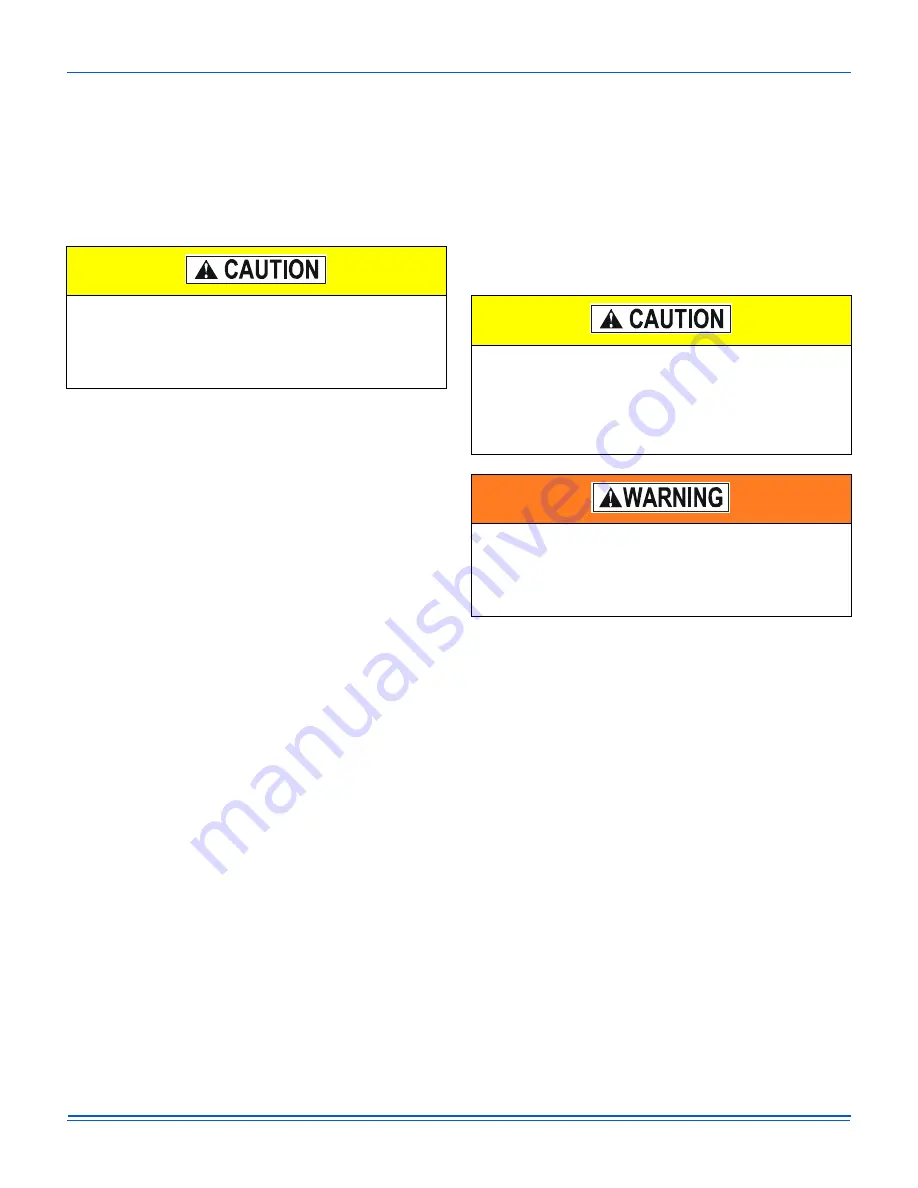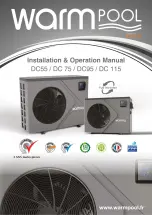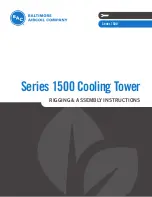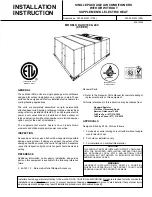
5565606-TIM-B-1018
Johnson Controls Ducted Systems
35
the transducer to a static pressure tap (field supplied) in the
supply duct located at a point where constant pressure is
expected. To prevent an unstable signal due to air turbulence,
there should be no obstructions, turns or VAV terminal boxes
up- or down-stream of the sensing tube location for at least a
distance of 6-10 times the duct diameter. Tubing must also be
run between the 'LOW' pressure tap of the transducer and
atmospheric pressure (outside of the unit).
Factory-installed VFD
The factory-installed VFD is mounted in the blower access
compartment. The drive comes wired from the factory to include
both 3-phase power and control connections (run permit signal,
speed reference signal & fault signal). All required drive
parameters are pre-programmed at the factory, except in the
case of 208-volt applications, in which the parameter that
defines motor nameplate voltage must be changed to a value of
208.00 and the parameter that defines motor-rated current must
be changed to the appropriate value appearing on the motor's
nameplate. Refer to the enclosed drive material for instructions
on changing parameter settings.
For units with VFD and VAV control, the unit must first be put
into the Occupied Mode to start operation. The default setting
for all VAV units is 'Unoccupied', therefore the installer must
add a jumper wire between terminals R - OCC on the UCB to
put the unit into 'Occupied' Mode. Additionally, the unit can be
switched between Unoccupied/Occupied mode through
network communications.
Occupied mode can be set by any one of three methods.
1.
A BAS writing to the UCB.
2.
If not already equipped with a jumper between R-OCC,
then installer shall add. Ensure the OccMode is set to
External.
3.
Using the schedule within the UCB.
Ensure OccMode is set to Schedule and use this feature to
indicate occupied and unoccupied times each day.
Manual Bypass
An optional, factory-installed manual bypass switch available
with factory-installed VFD can be found in the Blower Motor
Access compartment and has the following three positions:
•
DRIVE
- routes power through the VFD for modulating
control of the indoor blower motor.
•
LINE (or BYPASS)
- routes power directly to the motor
which provides full-speed motor operation and complete
electrical isolation of the drive.
•
TEST
- routes power to the VFD but not to the motor to
allow for drive programming and/or diagnostics.
If a drive failure occurs, the unit does not automatically switch to
bypass mode. The LINE/DRIVE/TEST switch must be manually
switched to the LINE (BYPASS) position. If there is a call for the
fan, the indoor blower motor will run at full-speed while in the
bypass mode.
'VFD-ready' For Customer-installation
Units configured as 'VFD-ready' provide provisions for a
customer-installed drive. The physical dimensions of VFDs can
vary greatly among manufacturers, horsepower ratings and
voltage requirements. Keep in mind that drive manufacturers
also require various minimum clearances to allow for adequate
internal cooling of the drive during operation.
The unit comes with a mounting bracket installed in the Blower
Access compartment which may accommodate other vendor's
drives depending on their size. In order to utilize the unit's
mounting bracket, the maximum recommended drive
dimensions are limited to approximately 9" H x 5" W x 7.5" D.
If the drive will not fit in the allotted space, then it will need to be
mounted elsewhere; either within the building on a
perpendicular wall which is not subjected to excessive
temperature, vibration, humidity, dust, corrosive gas, explosive
gas, etc., or within an appropriate enclosure rated for outside
installation to safeguard against moisture, dust and excessive
heat.
The power leads to the drive (L1, L2, L3) and from the motor
(T1, T2, T3) have been temporarily spliced together with wire
nuts. After removing the wire nuts, connect the wires to the
field-installed VFD per the VFD wiring diagram (See Figure 27).
Do not run plastic tubing in the supply or return air ducts
as air movement could cause erroneous pressure
measurements. If the tubing penetrates through the
bottom of the unit be sure openings are sealed to
prevent air and water leakage.
If the unit is operated with the manual bypass switch in
the LINE (BYPASS) position and there are VAV boxes
present in the duct system, then boxes must be driven to
the full-open position using a customer-supplied power
source to prevent over-pressurizing and possible
damage to the ductwork.
Before beginning any service, disconnect all power to
the drive. Be aware that high voltages are present in the
drive even after power has been disconnected.
Capacitors within the drive must be allowed to discharge
before beginning service.
















































